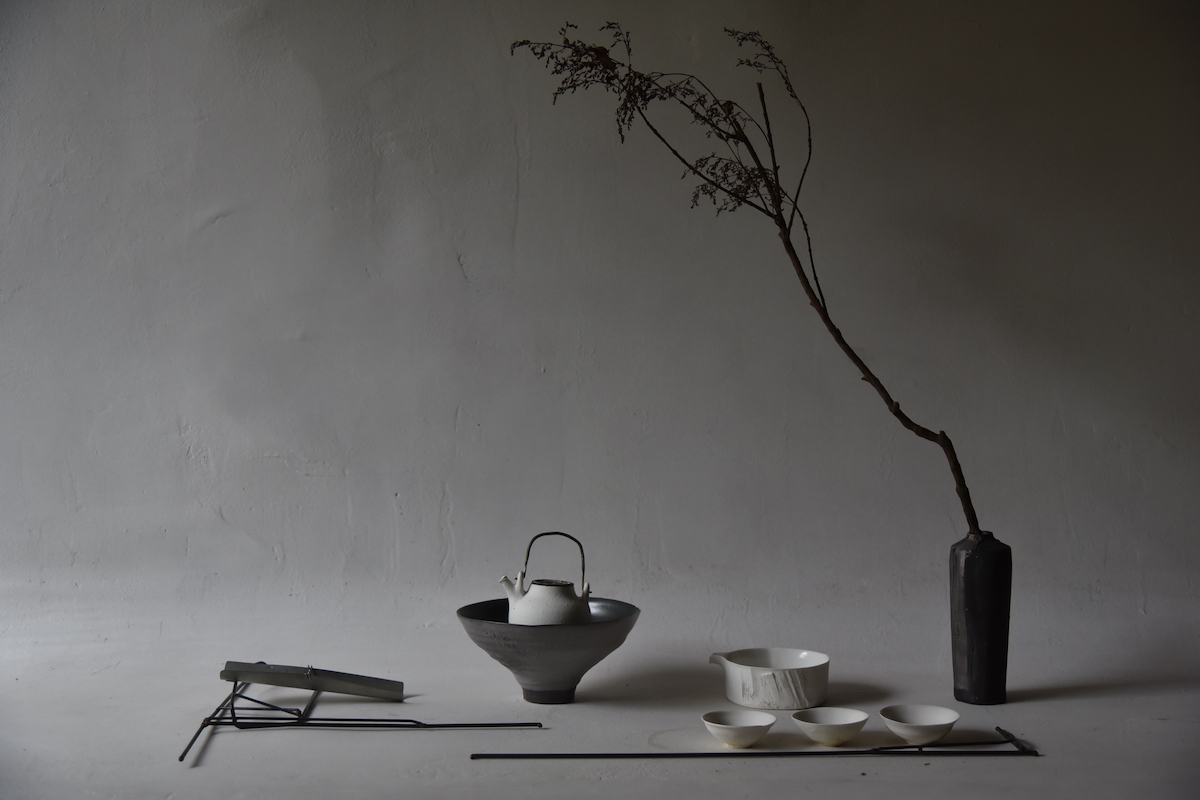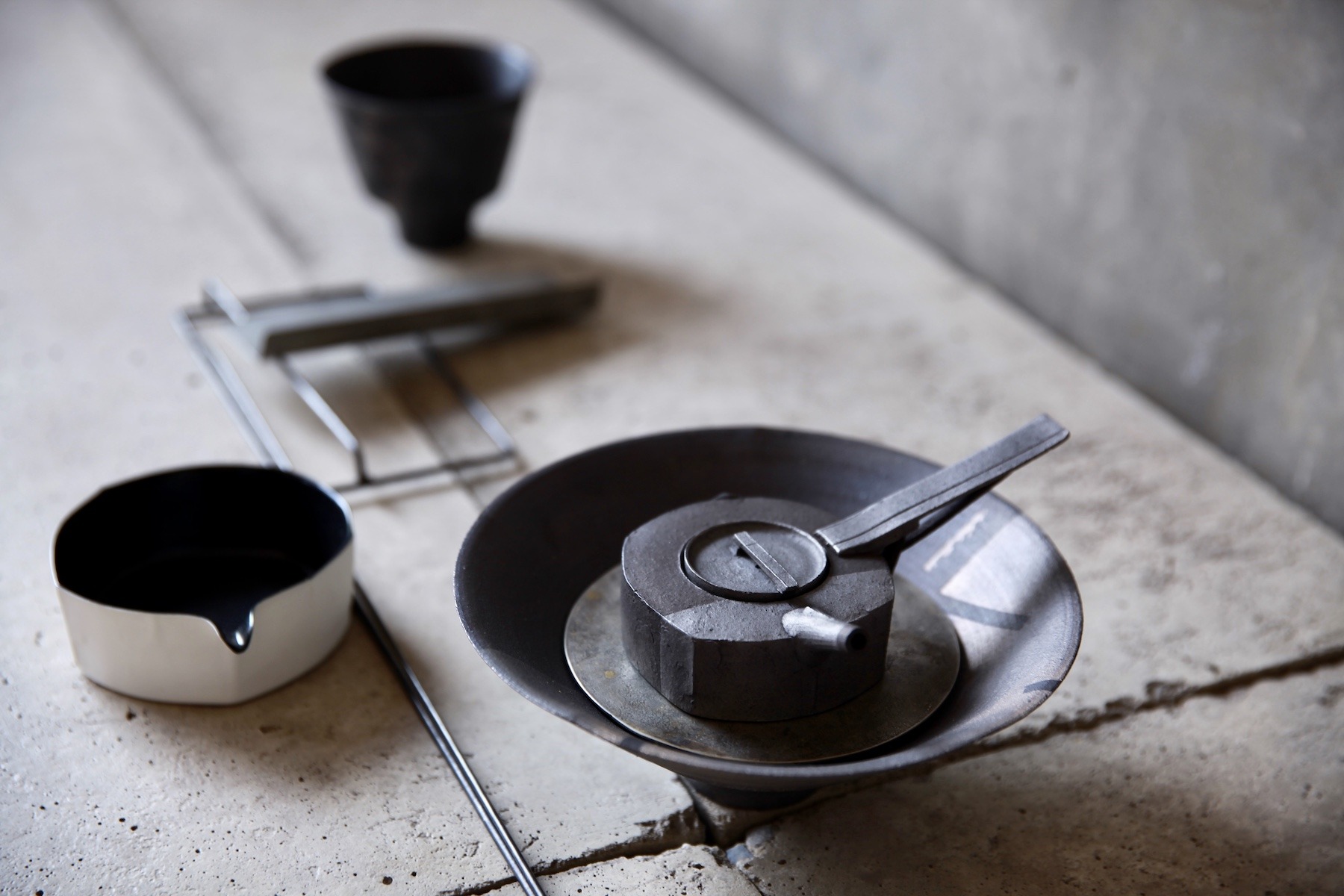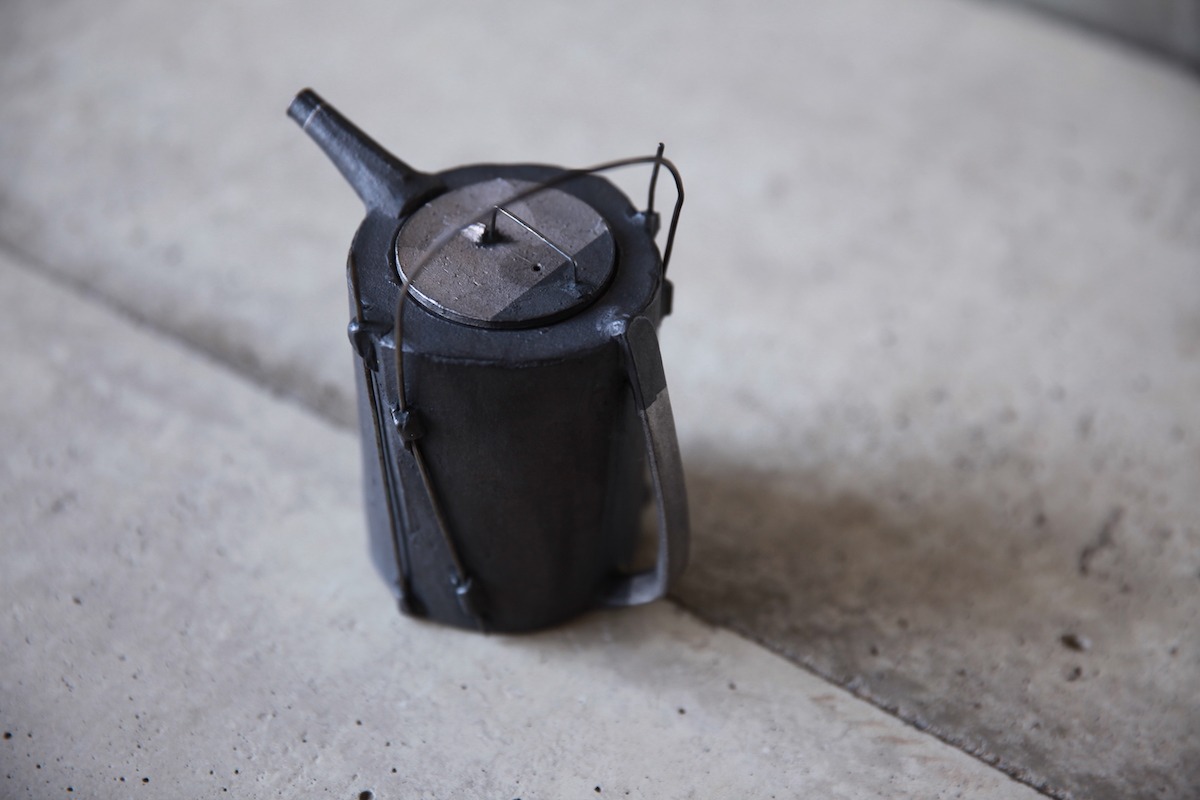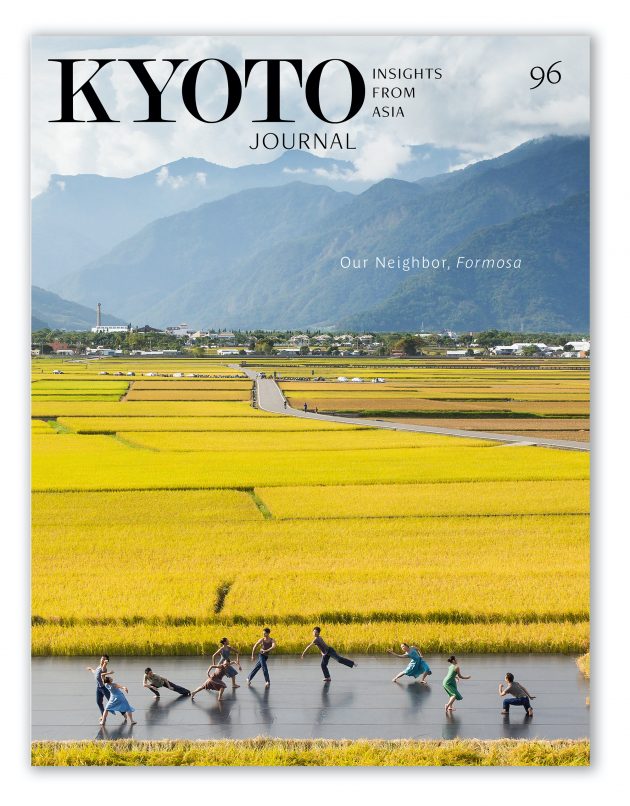The day we visit the studio of ceramicist Wu Wei-cheng, the central-western city of Taichung is shrouded in the fog of a heavy, early-summer shower. On first glance, the warehouse that Wu shares with a woodworker seems a less-than-ideal arrangement, for it is completely open to the elements—the insects, the heat, the commotion from construction workers on the estate, and beyond that, the traffic on the busy road to the centre of the city. It becomes clear, though, that Wu is quite at home here. He insists that for a ceramic artist engaged primarily in making tea pots, the time spent imbibing tea far exceeds that of fashioning clay. Just as I wonder whether to take this remark with a pinch of salt, I realize I have not come across an artisan workshop more spotless, the space here being taken up more than anything by the long makeshift table Wu has set up to receive guests.
We sit in those Chinese, hardwood, wide-bottomed chairs that make you feel like you are in church, and wordlessly watch Wu serve us a special oolong. The honey-like flavor, he says, comes courtesy of insects that have been permitted to feed on the leaves.* I maintain an almost sombre silence, purely out of habit, for in Japan tea preparation is a ritual that demands such. But despite all the aspects of Japanese culture that have been transplanted to Taiwan, that sort of formality is out of place here, Wu says. What they call laorencha or “old man’s tea” is a much more relaxed, social affair. That is not to say that the process is not highly measured, but it would seem that bringing out the best flavour of the tea is what’s most sacred here. Sure enough, Wu uses a thermometer to ensure the water is exactly the desired 80 degrees. This is how he starts every morning, he says. Raising one of his dainty porcelain teacups to my lips, I inhale the sweet fragrance of the brew.

At the time of our visit, Wu’s pieces had very recently been shown at a four-person exhibition in Tokyo’s SENSART Gallery, among whose participants included Japanese veteran potter Yo Tanimoto, on the theme of “Respect through Taiwanese Tea.” This is not the first time Wu has exhibited in Japan, where his work has found a keen following. And so, half-expecting to engage in a conversation about such events and his connections to the country, I am surprised to find that Wu has little to say. This is simply because he does not give much thought as to where his work ends up: “I just do as I like. I leave those sorts of curatorial decisions to the gallerists.”
Taichung born and bred, Wu Wei-cheng’s fascination with pottery emerged organically and spontaneously—he recalls that much of his high school years were spent doodling, at which time he had already developed a keen interest in industrial design and architecture. But as soon as his hands came into contact with clay, Wu was hooked. Except for a couple of Japanese magazines, resources were few and far between at the time, and he did not take to the idea of formally apprenticing to any of the potters he encountered in the area, so he learned largely through trial and error. “Just do it yourself” seems to have been Wu’s mantra all along. Having finished compulsory education and in possession of a potter’s wheel, he began experimenting with myriad glazes, clays and techniques, renting kilns in the area until his father was convinced enough of his son’s commitment to give him one. Asked whether he has ever taken instruction from anybody, the answer is a resounding “no.”
Wu cites sculptural considerations in his work, and the boxy, bronze figures of celebrated artist Ju Ming among others as inspiration for them. His pieces defy their own materiality: their angular forms and glazes —sometimes metallic silvers and glossy reds—give the appearance of welded steel or even lacquerware. But for a few tell-tale signs, they may as well be the works of two or more completely different potters. Yet in spite of his willingness to experiment, he is also highly methodical, leaving little to chance. Unlike many Taiwanese ceramic artists who insist on using local clays, Wu prefers to use an imported variety to ensure a consistency of texture and clarity in the colors of his glazes.
Being entirely self-taught, Wu’s disregard for the rules and insistence on individuality would seem unsurprising, But it was not always that way: “It wasn’t until the ten-year mark that I managed to find a balance between form—in other words, what makes a “good” or “efficient” utensil—and style, the latter being an expression of my personality,” he says. He gestures to one of his teapots, and remarks that the piece would not meet the standards of Yixing ware*—and therefore the most serious of tea connoisseurs—since the spout and top of the pot are not level with each other. The tea-boat or hucheng that it stands on—another piece of Wu’s—which is ordinarily curved so as to hold water, is also hardly fit for its purpose: “I like to think of it as a stage, where the teapot is a model, rather than something to contain it.” Such people who would take offense at this, though, are few and far between these days in Taiwan, he admits. Even those who study tea formally will eventually carve their own path and way of doing things.


With Wu’s page having garnered a phenomenal 60,000 followers on Instagram, the topic is difficult to ignore. Thanks to such platforms, craftspeople from all over the world have been able to connect directly to potential customers, without the need for middlemen or footing the cost of brick-and-mortar rental spaces for exhibitions. But in Wu’s case, he almost finds it distasteful to deal with that side of things, and as such all his pieces are offered solely through galleries, like THZ Gallery in the old potting town of Yingge, located about an hour outside of Taipei. What Instagram has served to do besides offer exposure, he says, is enable a conversation between tea lovers and ceramic artists—an opportunity for potters to truly understand the needs of their customers.
I cannot help but be skeptical about Instagram’s contributions to tea culture, for the platform is perhaps better known for peddling a manufactured version of reality much of the time. If the #gongfucha hashtag is anything to go by—think highly-staged, dimly-lit tea rooms with expensive-looking utensils, and highly sensual, slow-motion clips of water draining from lush leaves—then it would seem the tea community is also guilty of this charge. With such strong philosophical foundations that modern urbanites could benefit from some insight into, it seems a waste to dilute tea into little more than an interior design magazine spread, or a saleable commodity. “Is the tea world today not missing something here?” I ask Wu, but he is hesitant to be prescriptive— rather, he truly believes people should simply do what they want. I am reminded of the words of a friend, a master of the Urasenke School, that tea practice is really about “being a good host, and as a guest, to drink the tea with all of one’s heart.”
*Called zhuoyan-cha (著蜒茶), the famous Oriental Beauty Tea is made in a similar way, whereby the tea jassid (Jacobiasca formosana) prompts the tea tree to produce monoterpene diol and hotrienol in defense.
*Yixing ware, made from clay found in Yixing, in the Chinese province of Jiangsu, is most coveted among practitioners of tea and was in popular use by the 15th century.
Order new issue KJ96: our neighbor formosa


Author
Lucinda Cowing
Author's Bio
Lucinda Cowing is KJ’s managing director. She also guest-edited the latest Taiwan special issue.
Andy Cheng Ta Yang is a Taipei-based medical student, tango dancer and translator.
Credits
Header portrait by Lucinda Cowing. Text photos courtesy of Hermit’s Hut 三徑就荒 teahouse in Taipei and Wu Wei-cheng


